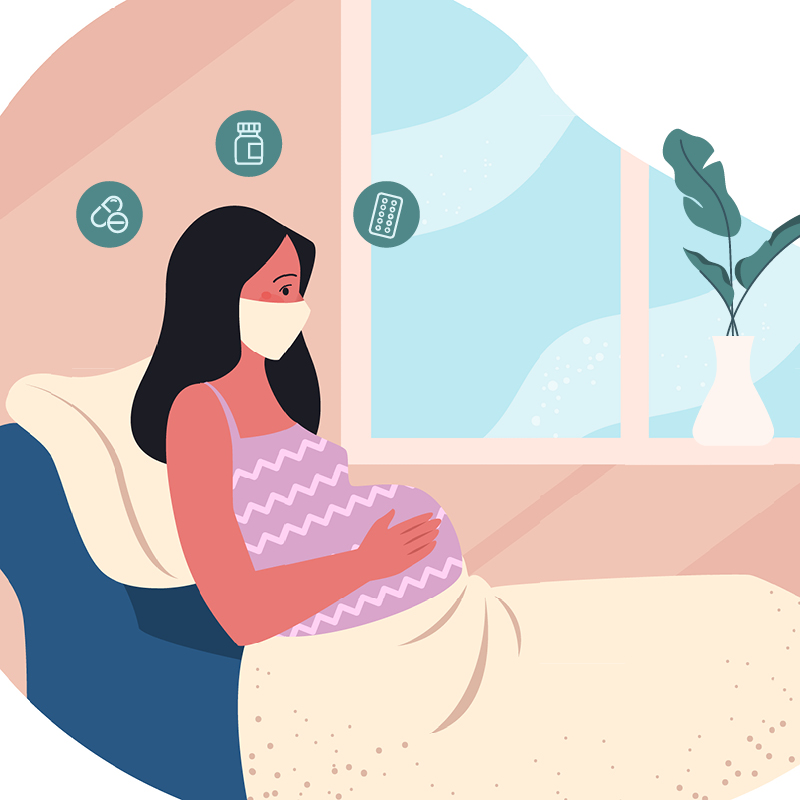One of the many unique experiences of pregnancy is the beginning of noticeable fetal movement. For most women, this happens at 18-20 weeks.
As your baby grows through different stages of development, the number and type of movements usually increases. They are often felt as a flutter, swish, kick, or roll.
Any decrease or change in movement can be concerning, which is why it is so important to contact your OB provider quickly if you notice something change.
Our experts at Rochester Regional Health share their guidance on the types of movement that matter – and what to do (and what not to do) when keeping track of your baby’s movements.
What to do
Do keep track of when movement happens
Babies can move at any time of the day, so take note of when you feel movement. It is common for babies to more active in the afternoon and evening hours.
When in utero, a baby will sleep for periods of 20-40 minutes – usually no longer than 90 minutes. If you notice that 90 minutes have passed without any noticeable fetal movement, contact your OB provider as soon as possible.
It is important to note that when you are active, it may not be as easy to feel your baby’s movements.
Do count movements in an hour
Moms should remember that there is not a specific number of movements that is considered normal for any pregnancy.
Learn your baby’s movement habits and make a note of the general number of movements per hour. If there is a change or decrease in movement, call your OB provider as soon as possible.
Do stimulate movement
If there is a certain kind of activity that gets your baby moving, make a mental note. Is there a specific song or type of music that gets baby going? When your partner or a specific friend/family member starts to talk, does baby start to move around?
Moving your belly around with your hand or gently poking your stomach with your finger may also spark some movement for your little one.
Do trust your instincts
You have been carrying this baby inside your body since its conception, so you know your baby best. If something doesn’t feel quite right, call your healthcare provider immediately. Seeking out care is better than waiting it out.
What not to do
Don’t use a home Doppler for reassurance
Some expecting mothers have a Doppler device they use at home to listen for their baby’s heartbeat. However, a home monitor does not provide an assessment or interpretation of the fetal heart rate pattern, so the devices can be falsely reassuring.
The best way to check on your baby’s heartbeat is to contact your primary OB office. Your health care team can use a monitor to observe the baby’s heartrate. As your baby moves, their heart rate will increase; this will be displayed on the monitor in the office.
Don’t count 10 movements in 2 hours
The idea that every baby should move 10 times in 2 hours is a myth. Each pregnancy is different and each baby will move differently – in frequency, type of movement, and position in the uterus.
Instead of counting 10 movements in 2 hours, simply count how long it takes for your baby to move 10 times. Once you develop a consistent timeframe, if that frequency changes or you do not feel any movement for 90 minutes, contact your OB provider.
Don’t wait if something feels off
Movement for your baby should not slow down, stop, or weaken as your pregnancy continues. If you are concerned about the frequency or types of movement that your baby is exhibiting, call your provider immediately.
Based on the stage of your pregnancy, OB providers will perform different types of evaluations and monitoring.
If by 24 weeks, you have never felt your baby move, contact your OB office. They will schedule an appointment to listen to your baby’s heartbeat and perform an ultrasound.
If you report decreased or changing movement between 24 and 28 weeks, your OB provider will schedule a full checkup appointment for you and your baby as soon as possible. This will include:
- Checking baby’s heartbeat
- Measuring your uterus
- Measuring your blood pressure
- Testing your urine for protein
If you report decreased or changing movement after 28 weeks, you will be brought in for a non-stress test (NST) and placed on a monitor so baby’s heartbeat can be observed for at least 20 minutes. These tests are often very reassuring that all is well with the baby.
Never hesitate to contact your midwife or OB provider if your baby’s movements decrease or change – no matter how many times it may happen. We are here to help.









